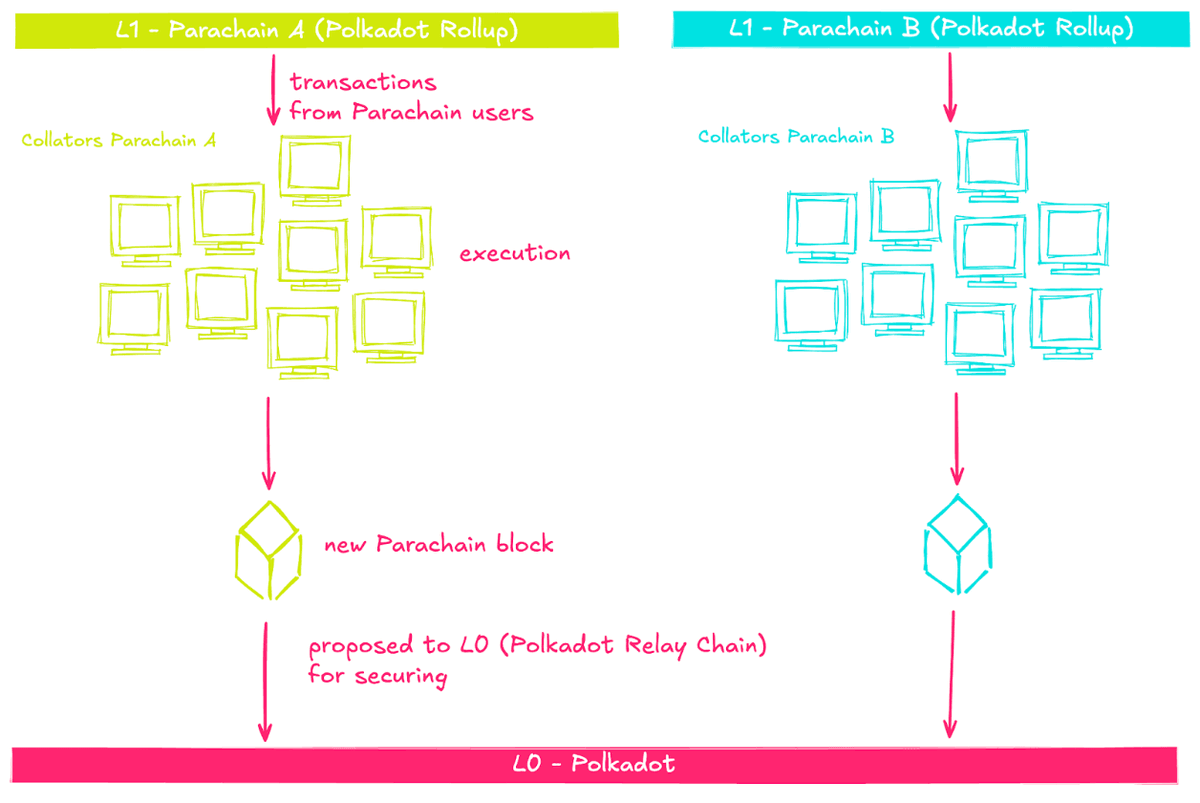Think Polkadot isn’t built for rollups?
You might be closer to the rollup model than you realize. 👀
Let’s unpack how @Polkadot's Parity built architecture delivers rollup-like scalability, security, and speed, with some significant advantages along the way.
👇🧵

Rollups emerged to solve Ethereum’s scaling challenges. They execute transactions off-chain, compress the data, and send it back to Ethereum for verification.
Think of it like a group project where one person does the work and another submits it. 🙃
Optimistic rollups assume transactions are valid unless someone proves they’re not (which can take 7–14 days).
ZK rollups verify everything upfront using advanced math (zero-knowledge proofs), but they’re complex and harder to build.
So where does Polkadot fit in?
With parachains, which we now call 'Polkadot rollups' in the Agile Coretime era, Polkadot has quietly offered a rollup-like architecture all along.
But with some serious upgrades💪
Each parachain:
💪 Executes its own transactions
💪 Produces blocks independently
💪 Submits them to the Polkadot Relay Chain for shared security & finality
Sound familiar?
That’s basically how rollups work… but faster, more secure, and built in at the protocol level.
Let’s break down what makes parachains more like “cynical rollups”:
They assume things can go wrong and build in layers of validation to protect against it.
👷 Collators propose blocks
🛡️ Backers (Relay Chain validators) verify them
🔍 Approval checkers re-check them
Data availability?✅
Polkadot uses erasure coding, splitting data into fragments, distributing across validators, and making reconstruction easy (even if someone ghosts you 🫥).
This approach is not only swift and efficient but also eliminates the need for a separate DA layer, making it a standout feature of Polkadot's architecture.
Finality? Also✅
Parachain blocks usually reach finality in under 18 seconds using Polkadot’s GRANDPA mechanism.
⏱️Compare that to 7–14 days for optimistic rollups to finalize safely on Ethereum.
That’s a massive win for devs who want to move fast without compromising security.
Looking to go multichain? Polkadot simplifies this process for you.
XCM (Cross-Consensus Messaging) is built in, giving you fast, secure, and native interoperability between chains: no bridges, no hacks, no delays.
It just works.
A lot to take in, right? Let's recap:
Polkadot parachains are like rollups, but:
⚡ Finalize faster
🧱 Built into the protocol
🔐 Backed by shared security
🧬 More interoperable
📦 More flexible with Agile Coretime
They’re rollups with better batteries included.
How does Polkadot compare with ZK and Optimistic rollups?
👉
If you're building your rollup, you don’t need to start from scratch.
Polkadot gives you the tools to launch faster, scale securely, and connect natively to a whole ecosystem.
Start building:
👉
Go deeper:
👇
4.74K
53
The content on this page is provided by third parties. Unless otherwise stated, OKX TR is not the author of the cited article(s) and does not claim any copyright in the materials. The content is provided for informational purposes only and does not represent the views of OKX TR. It is not intended to be an endorsement of any kind and should not be considered investment advice or a solicitation to buy or sell digital assets. To the extent generative AI is utilized to provide summaries or other information, such AI generated content may be inaccurate or inconsistent. Please read the linked article for more details and information. OKX TR is not responsible for content hosted on third party sites. Digital asset holdings, including stablecoins and NFTs, involve a high degree of risk and can fluctuate greatly. You should carefully consider whether trading or holding digital assets is suitable for you in light of your financial condition.

